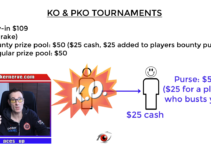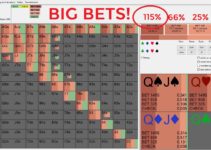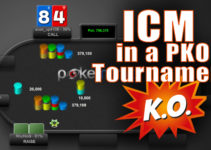The craft of bounty hunting in progressive knockout tournaments is where the elite players gain a huge edge. It’s the reason why knockout tournaments are currently the most profitable tournament format.
With an instant cash reward from the start of the tournament for busting a player, naturally, play is very loose. Especially as a player’s stack gets short, we see aggressive action as players contend for the bounty.
The most common play we see to scoop a bounty is where a player raises to isolate an all-in player or short stack. Top players are always looking to increase their chance of winning a bounty and so use isolating as well as other various crucial tactics to accumulate bounty rewards including: Limping, adjusting opening raise sizes,huge jams and more.
In this article, we’ll cover the PKO strategies you can implement into your game to start winning more of the bounty prize pool. Let's wreak havoc in PKO tournaments and amass some huge bounties!
Isolating in a PKO tournament
Here’s a quick video outlining why we are so incentivized to isolate players we cover in a knockout tournament.
[embedyt] https://www.youtube.com/watch?v=SzKEU-eVQ7o[/embedyt]
Although the idea of isolating is a simple one, the majority of players aren’t correctly executing it. This is mostly due to the fact they aren’t used to going out of their way to try to get heads-up with an opponent, sometimes even with a really wide range.
The bounty reward dynamic can really skew ranges considerably. We see regular players passing up profitable spots to pick-off bounties, then we see the 'crazies' getting all-in with anything to try to win a small bounty, and everything in between!
To make the most of isolation opportunities, we need to take the right strategic approach. There are 4 main considerations to factor in which will result in consistently isolating optimally;
1. Value of the bounty (ratio to the number of start stacks)
2. Equity vs villains range (adjusted to bounty size)
3. Active players in the hand ('vpip' players and players left to act)
4. Tournament situation (ICM, number of players we cover, etc)
Let's go through these 4 key aspects to improve PKO success.
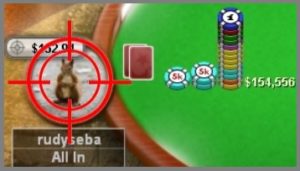
Value of the bounty
As a bounty value increases, naturally we are more incentivized to compete for it.
What trips up many players is they see the dollar amount without taking into account the player’s stack size.
At PokerNerve, we use the instant and accurate system, PokerNerve’s Bounty Factor, to correctly gauge the worth of a player's bounty in any situation. Some players have worked out different systems to use but the key is not to think about a stack in terms of big blinds or M value, but rather the number of start stacks, as we discussed in this article on progressive knockout tournament strategy.
Whatever system you use, make sure you are gauging this correctly as it’s the vital first step to correct decision making in a PKO MTT.
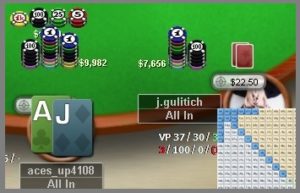
Equity Versus Villains Range
If an M8 (≈20bb) stacked player jams first-in from the small blind, what range would you call with from the big blind?
What about if they have a start bounty or perhaps say 3 start bounties? Come up with a system that works for any situation where you can correctly account for the value of the bounty you determined in step 1.
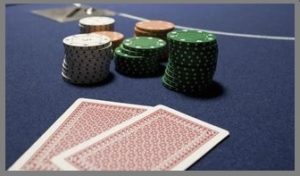
Active Players in the Hand
A regularly occurring isolation opportunity is when a player you cover has shoved and the action folds to you, and you’re considering moving all-in too. With the hopes of playing the pot heads-up and giving yourself the best chance of winning the bounty.
This often isn’t an easy decision to make. Especially as the number of players behind you left to act increases. And with a deeper stack and hence more to risk, you need to be playing these spots really well since they’ll be important decisions that come up often. So to help you regularly make accurate decisions, Power Numbers are a great tool we can quickly use to help gauge how aggressive we should be.
Power Numbers
It’s rare in a regular format MTT to isolate wide or do so with a deep stack. Thankfully with power numbers, this unfamiliar spot to most will become just another quick calculation. As I'll demonstrate in the next video, using power numbers as a guide to decide what range would be profitable to isolate with.
[embedyt]https://www.youtube.com/watch?v=03snnuvf9Gk[/embedyt]
Power numbers are a great tool to help calibrate the correct range to isolate with. Situations aren’t always straight forward though. Formation, which refers to the positions and bets of the players around the table, is going to be an important factor when it comes to isolating.
For example, a UTG open followed by a UTG+1 jam is going to result in you looking to get involved with a far different range had the action folded around to the small blind and they opted to jam a short stack.
Frequently you’ll encounter situations where players have entered the pot behind a short stack jam by calling or raising to try to play for a bounty. Are they trapping or just a loose fish bounty hunting?
You need to systematically work-through the player ranges to determine what hands will be profitable to play. In the following video, we see Acesup working through an isolation situation. A short stack has jammed and there are some players still left to act in the hand that he needs to account for.
Using some of the points made throughout this article, he'll logically break down the situation and come up with nearly the exact same ranges Holdem Resources Calculator (HRC) also calculates for this spot.
Having a 'covering stack' plays an important role when it comes to factoring in active players in the hand. Since if we have more chips than our opponents, we can knock them out of the tournament if we win an all-in confrontation and win their bounty.
This extra potential bonus if additional players commit to the pot allows us to loosen up the range we can isolate with. Adjusting to opponents stack depth and the number of start bounties they've accumulated.
Furthermore, by covering players, it disincentivizes them to clash with us. Making it less likely they'll enter the pot against us since they'll be continuing with a tighter range.
On the flip side, if we isolate a short stack and players behind cover us, they'll be extra incentivized to try and go for the double knockout. So we need to account carefully for the active players in the hand and adjust our range accordingly. For more on the importance of having a covering stack and the significant way it can alter our range in various situations, be sure to check out our next article release on Covering Stack Play in PKO Tournaments.
How you are doing in the tournament (tournament situation)
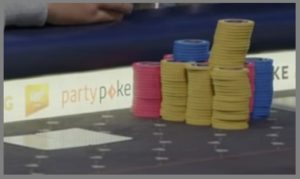 The final factor to weigh-in when deciding to isolate is how you are doing in the tournament in terms of the tournament stage and your stack size.
The final factor to weigh-in when deciding to isolate is how you are doing in the tournament in terms of the tournament stage and your stack size.
If it’s late-stage or final table, you need to consider the ICM impact and tighten-up. This article here explains the ICM effect in tournaments.
Along with ICM, stack preservation is at times an important point to consider. If you cover a number of players at the table, and especially if they are short and have large bounties, you’re in a good position to possibly pick-up some bounty bonuses soon. So you might want to refrain from taking any marginal or even slightly profitably isolations if you think jeopardizing your current stack utility at the table isn’t worth it.
Final Thoughts
The bounty dynamic incentivizes players to be constantly on the lookout for isolation opportunities. The most profitable of spots in PKO’s, but also a precarious one. It brings about an extra layer to the decision-making process. With differing stack sizes and bounty amounts to consider, it creates scenarios players aren’t traditionally used to dealing with in MTTs. It’s causing a large percentage of the player pool to be making regular, costly mistakes.
Thankfully by adhering to the 4 main isolation considerations, you’ll have a systematic approach. Allowing you to accurately determine the right sort of range to isolate with so you can play hands as profitably as possible, not missing any opportunities to accumulate bounties.

If you’d like to hone your skills and become a bounty hunter boss, be sure to check out PokerNerves’s Bounty Hunter Course for more PKO strategy! This includes systems for fast and accurate isolation calculations! Get 25% off the course with coupon code PN25.

